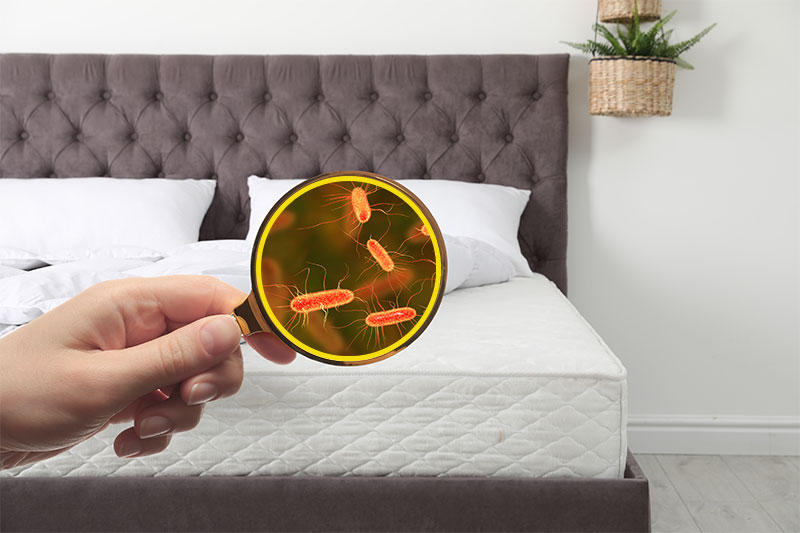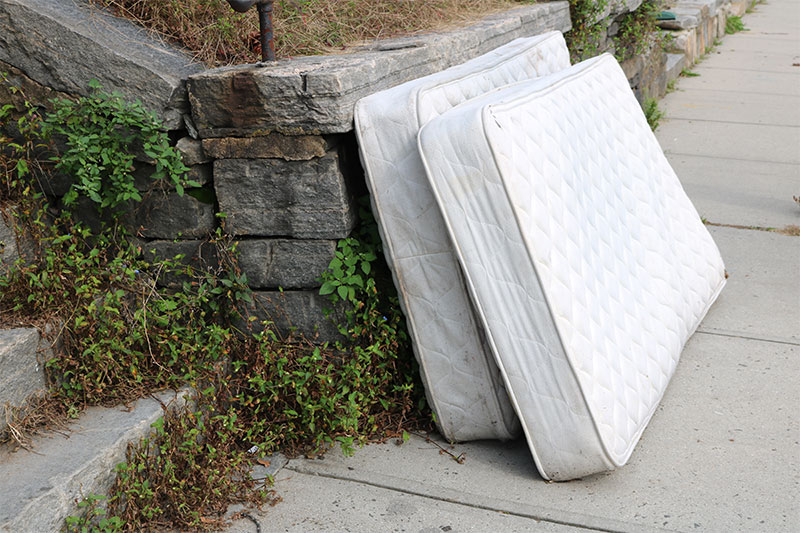The US National Sleep Foundation conducted a study with the following outcome: 75 percent of respondents had trouble sleeping.

In 60 percent of respondents, this manifested itself in the form of daytime sleepiness, which led to the poor performance of duties at the workplace, and frequent mistakes.
Some of the respondents sleep poorly due to poor health. Still, a considerable percentage of those who responded to suffer from sleep deprivation due to the poor-quality or old mattresses.
A British sanitary doctor, Lisa Eckersley, is confident that if the owners of old mattresses are told about the contents of their sleeping place, they will be horrified.
British scientists conducted a study of mattresses, which have been used for about eight years.
All of them turned out to be “centers” of microbial activity. Among the bacteria swarming in them, Staphylococcus aureus was found most often, fungi (17 species!), E. coli, and others.

Besides, chemical compounds remaining from cosmetics, microscopic food waste, and dead skin were also found.
Over the years, researchers explain, fungi and mold, as well as feces from bed (dust) mites, accumulate in the mattresses. These are inhaled by people, which leads to a persistent cough, gradually turning into asthma.
Bill Fish, a US sleep coach, emphasizes that sleeping, and therefore on our mattresses, we spend a third of our lives. And if the mattress is old, then it is literally stuffed with the remnants of our dead skin and natural oils, which is food for dust mites.
John Ramirez, an employee of the Florida Orthopedic Institute in Tampa, adds that dust mites are especially dangerous for people with eczema and allergies.
How this manifests, explains Noah Siegel, a sleep therapist, an otolaryngologist from Harvard.
According to him, asthma has a circadian rhythm and, as a rule, worsens by night.
When the “inhabitants” of the old mattress are added to this, this only exacerbates the situation.
Ohlen State University professor of entomology Glen Needham explained that as soon as a female dust mite gets into the mattress, lays eggs, and the process of “occupation” is started.
The longer you use the mattress, the larger the population of its invisible inhabitants will get.
According to experts, mattresses should be used for a maximum of 5-7 years. Otherwise, colonies of bacteria and ticks from the bed will spread to the body.
National Sleep Foundation experts recommend using mattresses for a maximum of eight years. But that is if it is maintained in good condition.

Todd Goldman, a chiropractor, explains that sleep on an old-age mattress adversely affects tendons, ligaments, and joints of the spine.
On the same matter, Dr. Cavita Sharma speaks of degradation of posture resulting in excruciating lower back pain.
Finally, if after sleeping in a room of a good hotel or at a friend’s house you feel much better than after a night spent on your mattress, your bed needs to be updated. And, of course, suddenly aggravated allergies, asthma, and dermatitis will indicate the same.
Scientists who dealt with the problem of weight gain and the impact of the mattress on the body noted that people who weight more should change their mattresses more often since they wear out faster.
Besides, a heavier person stays on the berth of dead skin and sweat, which contributes to the accumulation of bacteria, mold, and dust mites much faster.
Having come to the conclusion that you need to change the mattress, do not rush to consult with sellers in stores.
No one will give you an objective picture of a product, scientists say. They advise you to select a mattress for each person individually.
Someone might need a very firm one, but for others, a good night’s sleep will only be on a soft bed.
The Kovacs Foundation in Mallorca conducted individual studies of various mattresses, and its experts recommend not chasing the most expensive models. Among the mid-range offers, there are a lot of high-quality goods, you only need to choose the one that suits you.


